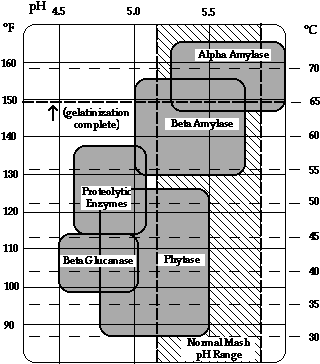misteradam
Well-Known Member
Hello,
I have prepared a cream stout about 2 weeks ago, the brew day went horribly wrong and it ended up having a mash temp of above 160 almost a full hour. fearing a low efficiency and since the wort didn't taste sweet at all, i added 1lb of corn sugar and 1 lb of honey to give it a little kick.
i took a gravity reading at the start and it read around 1.070. i may have recorded an incorrect gravity reading, because i was pretty drunk. i can taste some alcohol in it as it stands, so i know it fermented a little.
at 1 week, the gravity read 1.045, so i figured it was off to a good start. however, there was no visible krauzen at any time... a little scum ring around the side of the carboy was there, and the airlocked was bubbling for a few days, so i thought it was O.K.
well, it's now 2 weeks and the gravity reading today still says 1.045. i tasted it and it has a slightly sour, not so good taste... i expected an off flavor from the high mash temp, though. smells like beer, coffey, and a gym sock.
so, now i'm not sure what i should do. i suspect that i failed to properly aerate the wort at pitching time. i shook it up for about 30 seconds, much less than my previous batch which turned out great.
i looked it up and oxygen can hurt the beer now that's its fermented.
should i get some yeast nutrients and swirl the wort around?
how much vigor can i put into one of these "swirls" i've been reading about?
I appreciate any input you guys can offer!
Thanks,
Adam
I have prepared a cream stout about 2 weeks ago, the brew day went horribly wrong and it ended up having a mash temp of above 160 almost a full hour. fearing a low efficiency and since the wort didn't taste sweet at all, i added 1lb of corn sugar and 1 lb of honey to give it a little kick.
i took a gravity reading at the start and it read around 1.070. i may have recorded an incorrect gravity reading, because i was pretty drunk. i can taste some alcohol in it as it stands, so i know it fermented a little.
at 1 week, the gravity read 1.045, so i figured it was off to a good start. however, there was no visible krauzen at any time... a little scum ring around the side of the carboy was there, and the airlocked was bubbling for a few days, so i thought it was O.K.
well, it's now 2 weeks and the gravity reading today still says 1.045. i tasted it and it has a slightly sour, not so good taste... i expected an off flavor from the high mash temp, though. smells like beer, coffey, and a gym sock.
so, now i'm not sure what i should do. i suspect that i failed to properly aerate the wort at pitching time. i shook it up for about 30 seconds, much less than my previous batch which turned out great.
i looked it up and oxygen can hurt the beer now that's its fermented.
should i get some yeast nutrients and swirl the wort around?
how much vigor can i put into one of these "swirls" i've been reading about?
I appreciate any input you guys can offer!
Thanks,
Adam






